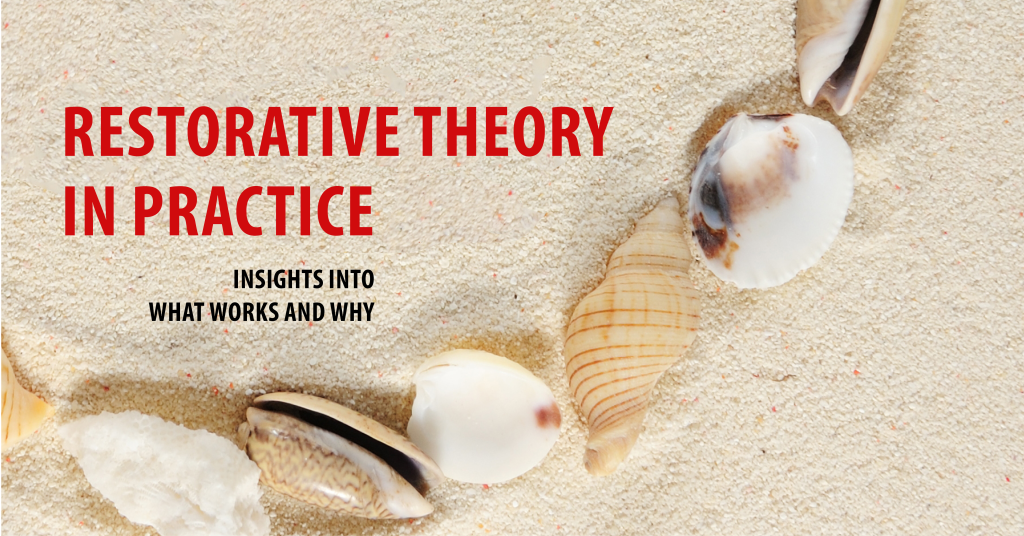Belinda Hopkins, author of Restorative Theory in Practice, provides her unique insight into what works in restorative practice and why.
Facilitating restorative conferences is one of the most rewarding things I do.
I can remember one of the first conferences that I facilitated on my own – many years ago now. It involved two young boys who had been playing outside their village community centre. They had been experimenting with a box of matches, some cloth and a jam jar. Young scientists at work! Suddenly they realised that it was tea-time, chucked their experiment into a nearby wheelie bin and rushed off home to tea.
A little while later, after tea, they went out to play again and noticed a kerfuffle outside the community centre. There was smoke coming from the building, sirens were heard as the fire engines arrived and a crowd was gathering. Curious to know what was happening the boys ran over and pushed their way to the front of the crowd, just opposite a window at the far end of the building – the bit furthest from the fire.
Inside was the neighbourhood police officer looking at the footage from the CCTV cameras. He glanced out of the window – and then looked back at his screen. He could hardly believe his eyes. There on the screen , he could see, crouching near the wheelie bins from which flames were to leap several minutes later and set fire to the building, huddled over something he could not make out, were the same boys whom he now saw at the front of the crowd! What luck. He went out, arrested them and they were driven away to the nearest police station – many miles away!
By the time I met the boys many months later they had had quite an adventure. Those were the days when there was no pre-meeting preparation so I met them for the first time sitting in a room with their parents, a fire officer and two members of the parish council who were responsible for the upkeep of the community centre.
The boys were timid and very remorseful – hunched like little frightened mice, the parents were tight-lipped and distressed ; suppressing a huge bundle of emotions – embarrassment, anxiety, anger, and fear. The parish councillors were incandescent and maybe also a little surprised to see that the arsonists they expected to confront were two tearful little boys of about 10.
Everyone had long and tearful stories to tell. The parents re-lived the experience of not knowing where their sons had been taken on that fateful day – only hearing from neighbours that they had been arrested – something that neither family had ever experienced before. The parish councillors shared their anger and distress at the damage to a well-loved and well-used Centre. And the boys – the boys told their story about matches, a piece of cloth and a jam jar …
And the conference worked its magic – because it felt like magic by the end – when everyone was smiling; the parish councillors were offering ways for the boys to make amends – picking litter up around the skateboard park, helping at the local village fete – jobs the boys were only too pleased to agree to – desperate as they were to put things right and show how sorry they were.
And the Chair of the Parish council leaned forward at the end and reassured the boys that she was willing to spread the word that they were certainly not arsonists but they had been a bit silly. A message re-inforced by the fireman – playing with fire can have serious consequences – a lesson the boys were unlikely to forget.
So what was this magic that had moved people from a place of anger, fear, shame and guilt to one of open-heartedness, collaborative problem-solving and celebration, from tears to smiles?
I simply stuck to my brief – I followed the framework I had been taught, blended with experience from having been a community mediator. I left the room metaphorically punching the air.
“It works” I crowed… And it really had felt like magic.
So now – many years later, I have had the chance to delve deeper into the magic of restorative encounters. I have invited 10 practitioners to reflect on what they think is happening as people are supported through the process to find mutually acceptable ways forward when a harmful incident has put such distance between them.
Each practitioner sees the restorative process through their own unique theoretical lens – that of Transactional Analysis, of Social Constructionism, of Constructivism, of Resonant Empathy – to name but a few of these lenses. There is no one definitive theory that explains the magic of the restorative process but I hope people will deepen their understanding of what may be going on – as I have as editor of the book.
Learn more about Restorative Theory into Practice
Belinda Hopkins is Founder and Director of Transforming Conflict, the National Centre for Restorative Approaches in Youth Settings. She has been pioneering restorative approaches in youth settings across the UK and beyond for over 18 years. She regularly runs training courses, writes books and articles, develops training materials and speaks at conferences nationally and internationally. Belinda is the author of Just Care: Restorative Justice Approaches to Working with Children in Public Care and Just Schools: A Whole School Approach to Restorative Justice, also published by Jessica Kingsley Publishers.
